Rapid transformation of Delhi intended for development comes at an obvious cost as we witness deterioration of air quality, vanishing green spaces, and an overall neglected state of urban ecology. Creating a world-class city translates into engaging with aesthetics over pragmatic ecological improvement. Contemporary urban vision is devoid and supportive of natural elements at the same time. Even at places where greenery is visible, it is more of a decorative element rather than an integral part of the urban ecosystem.
While architects and policymakers brainstorm solutions, the expertise of urban communities relevant in the context of maintaining balanced ecosystems within the city goes largely unrecognized – the Nurserymen & Maalis. Despite the plant businesses and maalis having aligned interests, they approach their work differently. Nurserymen equipped with diverse resources tend to manage the commercial aspects of plant production, including employee management and navigating regulatory landscapes. Meanwhile, urban maalis leverage traditional agricultural knowledge and use their expertise in cultivating plants in limited spaces to contribute to greening initiatives within urban environments. But, the lack of formal structures often makes it difficult to rigidly compartmentalize the responsibilities, leading to a more fluid and collaborative working pattern.
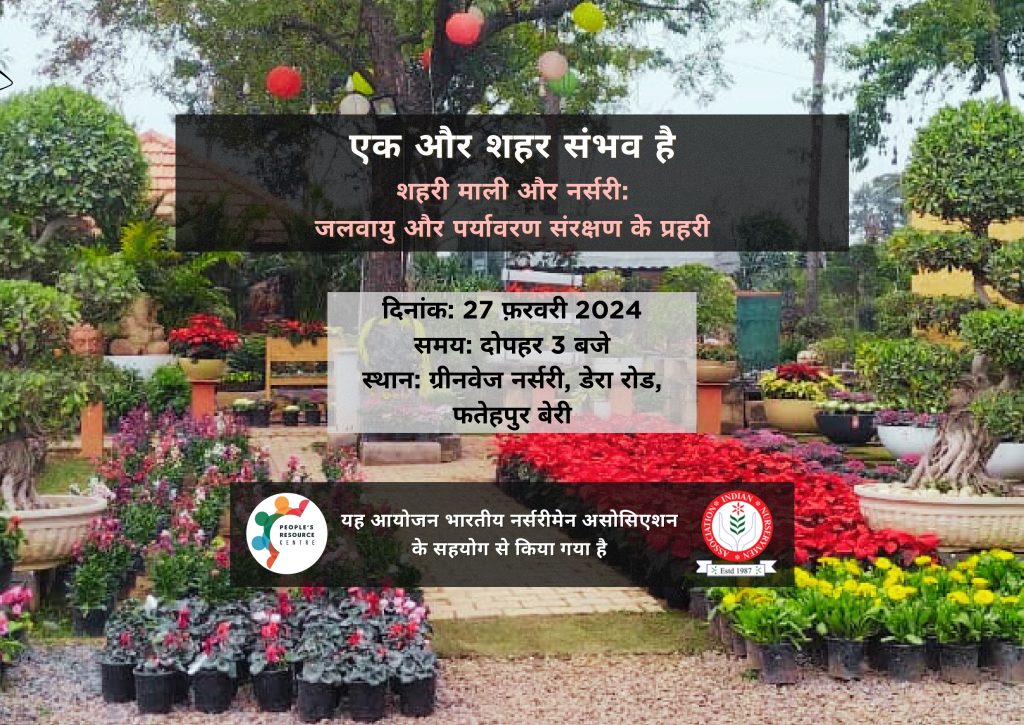
This edition of Another City is Possible brings forward perspectives on traditional communities, urban ecological partake, and the concerns of horticulture development shared by the people involved in this industry in one way or another. In collaboration with the Indian Nurserymen Association (INA), members of the General Council Board were present alongside the current and former representatives from Delhi, Noida, Gurgaon, Ghaziabad, and Faridabad at one of the largest nurseries of north India.
The series continued its monthly exploration of urban communities, meeting commenced with a welcome by our research assistant, followed by an overview of the gathering’s purpose, outlining the agenda of this session and the broader goals of this initiative. Program coordinator Rajendra Ravi then built upon this introduction by offering a detailed look at the organization’s work and the impactful policies it has implemented facilitated by sharing copies of our relevant draft policies. Following these opening remarks, the association’s General Secretary, Mukul Kumar Tyagi, fostered a collaborative atmosphere by encouraging introductions from members across different zones. He invited participants to share their concerns candidly, paving the way for a productive discussion and potential solutions.
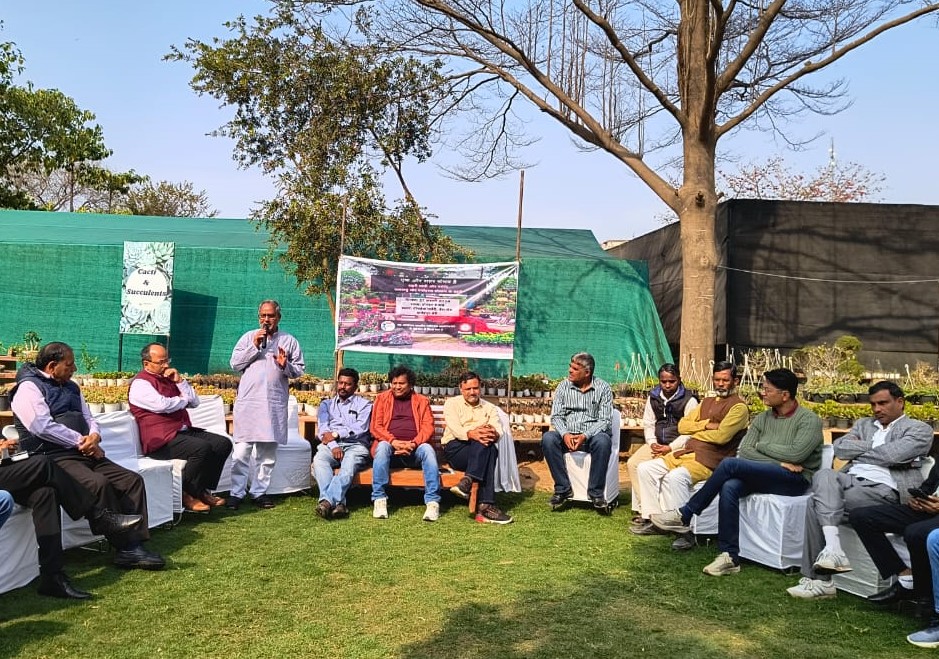
The Question of Land-Use & Authorization
Scattered across the city, Nurseries act as the catalysts of urban greening. Catering to a wide base of clientele, from individual households to government agencies and religious institutions to commercial establishments, the demands for greenery flow through these hubs. Through institutional influence, contracts are signed, tenders advertised, and orders placed, putting the Maalis at the centre stage of the execution to transform plans into structured ecosystems overlaying urban landscapes as they cultivate, tend, and nurture Delhi from grey to green.
The government’s focus on maintaining urban greenery is important, but a critical factor missing from the equation is the land on which nurseries, the source of this greenery, operate. While the benefits of green spaces are gaining recognition, the access to land, particularly for smaller nurseries, remains a complex and concerning issue.
Acquiring land in the first place is a challenging experience for many nursery owners followed by the struggles of maintaining ownership or right to practicing business on their own terms. The meeting highlighted instances where established nurseries faced sudden land acquisition, leaving them scrambling for new locations and disrupting their operations. Prominent example as put forth by the President of the association, Y. P. Singh, is of Yamuna Floodplains and the displacement of nurseries with re-allocation way too far from the original space. This lack of security certainly discourages long-term planning and investment in infrastructure and development.
Furthermore, the process of land authorization is often vaguely bureaucratic, adding to the uncertainty followed by difficulties. Transparency alongside streamlining a system for land allocation and protection of existing nurseries can be one possible direction of movement. The idea of designated green belts specifically for nurseries, similar to urban parks, is another potential solution. Additionally, designated display areas can be proposed to promote horticulture among the common public, potentially boosting demand and profitability for nurseries only.
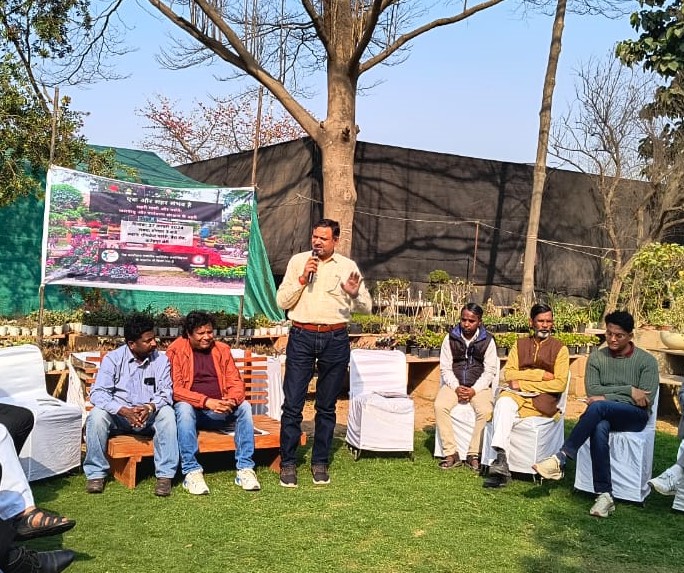
But, these goals remain unfulfilled due to a lack of resources and inadequate support from the government. Addressing these challenges by facilitating direct interaction with the government and providing resources for public engagement could aid in realization of full potential and create a win-win situation for both the horticulture sector and the government’s greening initiatives. And this approach is capable of offering them long-term security encouraging sustainable development within the domain.
Understanding the Operations and Obstacles
Climate change and environmental degradation are the consequences of past actions and economic priorities as pointed out by Mr. Ravi (President of Uttar Pradesh Chapter, INA) hailing from Shahjahanpur which has resulted in a future where capitalist instincts often outweigh the environmentalist approach. And in this context, he added that nurseries play a crucial role in fostering a new generation with a strong environmental ethic. However, operating a nursery in an urban environment presents distinctive aspirations and issues. While contributing to urban greening, nurseries work within a complex system of external factors and actors influencing their daily operations. Though they participate in the broader agro-business sector, they struggle to fully embrace this identity due to the inherent contradictions of maintaining a primary economic activity within an urban setting.
In this context, most of the nurseries face the disadvantage of being classified as non-agricultural professionals, leading to higher electricity charges compared to their agricultural counterparts. This disparity in energy costs creates an uneven playing field, impacting operational viability and hindering the competitiveness of nurseries. Advocating for a revised classification or exploring alternative energy solutions could alleviate this burden and ensure a more sustainable operating environment for nurseries.
Similarly, the location emerges as another factor influencing the operability. Evidently, the nurseries near Delhi’s borders face additional challenges due to unclear administrative jurisdictions. This ambiguity leads to bureaucratic hurdles and inconsistencies in regulations, creating unnecessary hindrances in their operations. An instance of irrelevant involvement of authorities was put forward by Mr. Manoj Bhati (Vice President, Noida- Ghaziabad Chapter, INA) where local politicians exploit their positions by expecting free plants in exchange of support. If these demands are not met, they may resort to issuing unwarranted fines or ‘faltu ke chalaan’ and unnecessary creating a hostile environment for nursery operations. In the same light, nurseries in Noida struggle to secure adequate land and the process of acquiring land from the Noida authority requires repeated applications, yielding minimal results. Basic utilities like reliable power supply are compromised where nurseries are forced to resort to expensive and polluting diesel generators, increasing operational costs and environmental impact.
Navigating administrative complexities also comes through building connections with different people involved in the sector. Owners and managers express a need to bypass the intermediaries and directly fulfil government contracts for plant supply. This process can potentially reduce costs and ensure timely delivery of plants to meet the city’s greening needs. However, the current system and its established middle men pose a significant hurdle in facilitating direct interaction with government agencies to create a more efficient system for urban greening initiatives. Consequently, Mr. Ramesh Kumar, INA Member from Ghaziabad aptly brings up how ‘State involvement is problematic more than it is helpful.’
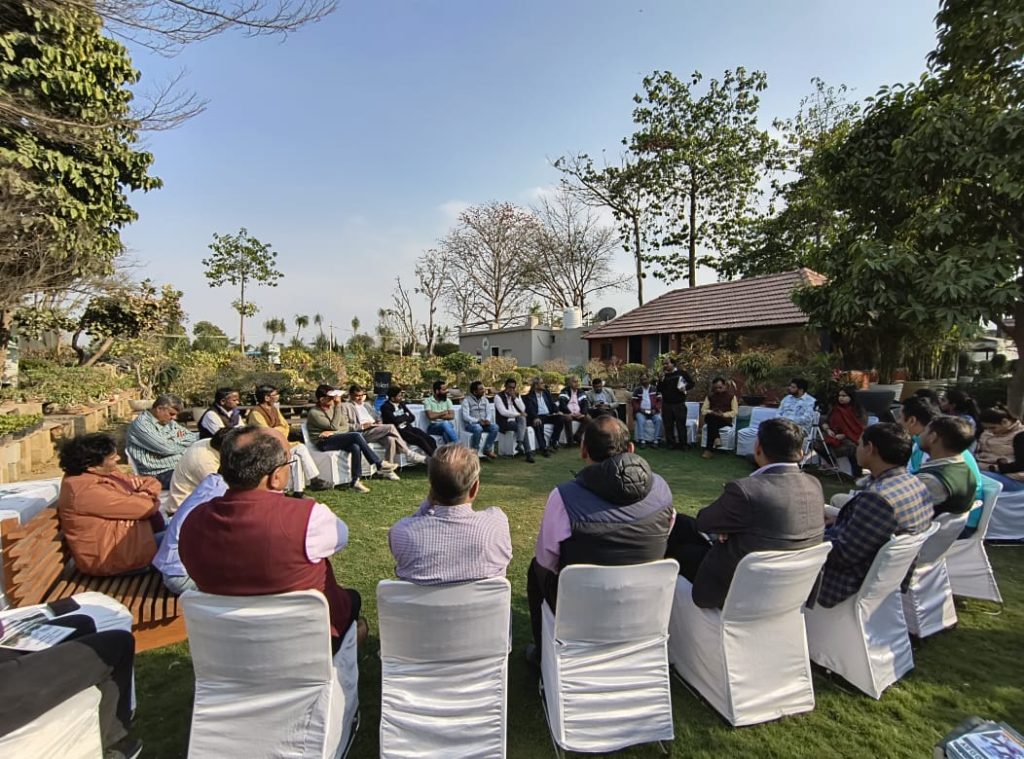
Moving forward from the systemic constraints, productivity of these spaces depends on the availability of land and fertile soil within the city. Scarcity of the same restricts their ability to expand operations and meet the growing demand for plants. Alternative land options, designated nursery zones, reclaimed land, soil management and optimization techniques can collectively enable effective functioning of the nurseries.
State’s Role in Fostering Skill Development
The past decade has brought many visible changes to the demand-supply chain associated with nurseries. Based on the urban requirements, the ornamental plants have gained popularity. But, at the same time, cities are witnessing a growing demand for herbal and medicinal plants rooted in aligned growth of awareness regarding health and environmental concerns. The post-pandemic world, with its improved connectivity through social media, has influenced individuals towards informed plant selection, evidenced by the growing inquiries about oxygen-producing plants and NASA-recommended air-purifying varieties. However, beyond informed consumers, the industry needs practical knowledge and institutions like the Indian Council of Agricultural Research (ICAR) supported by regional nodes provide valuable support through Maali training programs.
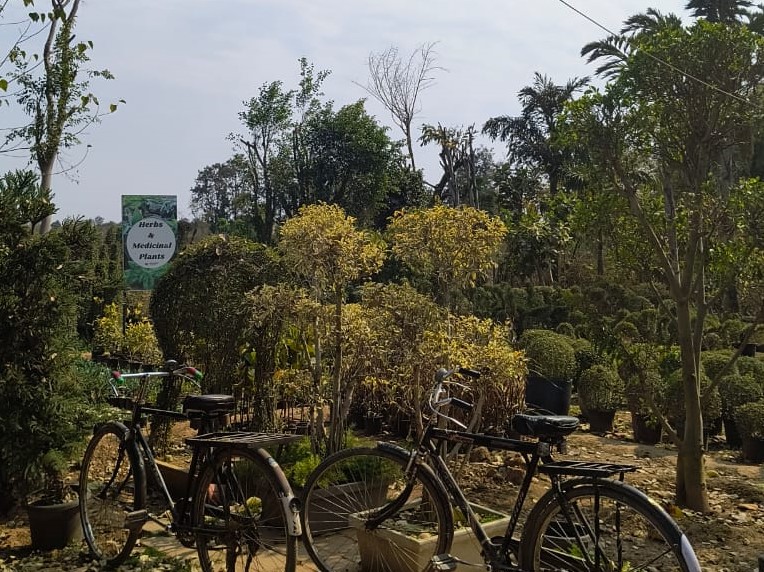
Despite administrative efforts to develop Maali training and skill development schemes, ground reality displays a different picture. These programs often exist only on paper and fail to translate into practical skills for the workforce. This gap leads nurseries to rely on hiring unskilled labor rather than well-trained Maalis. However, skilled Maalis who demand salaries of 30 to 40 thousand per month are an economic burden for many nurseries. As a result, nurseries are forced to self-train their labor, essentially operating as unofficial training centres where it is easier to give specialized training rather than a comprehensive one. Furthermore, Mr. Santosh Kumar Saini, Retired Director of the Horticulture Department recalled the once-established official training centre at Sunder Nursery, which offered comprehensive practical training, was closed decades ago. Despite the New Delhi Municipal Council’s efforts, these centres remain shut, leaving a significant void in the training infrastructure. This lack of qualified Maalis not only impacts the industry’s ability to provide proper plant care but also hinders its potential for growth and sustainability.
Several local interventions in the form of workshops by Indian Nurserymen Association on plant care in jhuggi-jhopri, the work of the Noida Horticulture Societies and the Kitchen Gardening Associations, Delhi’s community training programs, localized horticultural knowledge dissemination scheme and even non-governmental training programs in schools represent the evolving culture of promoting urban ecology. Development of a Nursery Act is underway, though currently stalled. If passed, this act will require active participation from nursery owners to ensure it effectively addresses their concerns. But, inefficient implementation remains the prominent concern of all. Limited scope coupled with lack of sustained support hinder their effectiveness.
To address the knowledge gaps, professionals from the industry have even seeked guidance through examples from European models and voice the need for plant-specific, soil-specific, and region-specific workshops for nursery personnel, Maalis, and even garden centre staff. Implementing regular training sessions, possibly in a ‘chai pe charcha’ format, could foster a sense of community. Shifting the focus from overly technical communication towards community-sensitive engagement utilizing platforms like WhatsApp groups can foster accessible knowledge sharing and engagement within local communities. Also, the contemporary reliance on self-trained labor or hiring expensive Maalis underlines the need for a more robust training system. Instead of solely relying on theoretical knowledge, a combined approach that recognizes and incorporates professional experience is crucial to equip Maalis with a more well-rounded and practical skill set. Additionally, targeted discussions to understand regional plant demands can ensure this sector caters to specific local needs, creating a more responsive network.
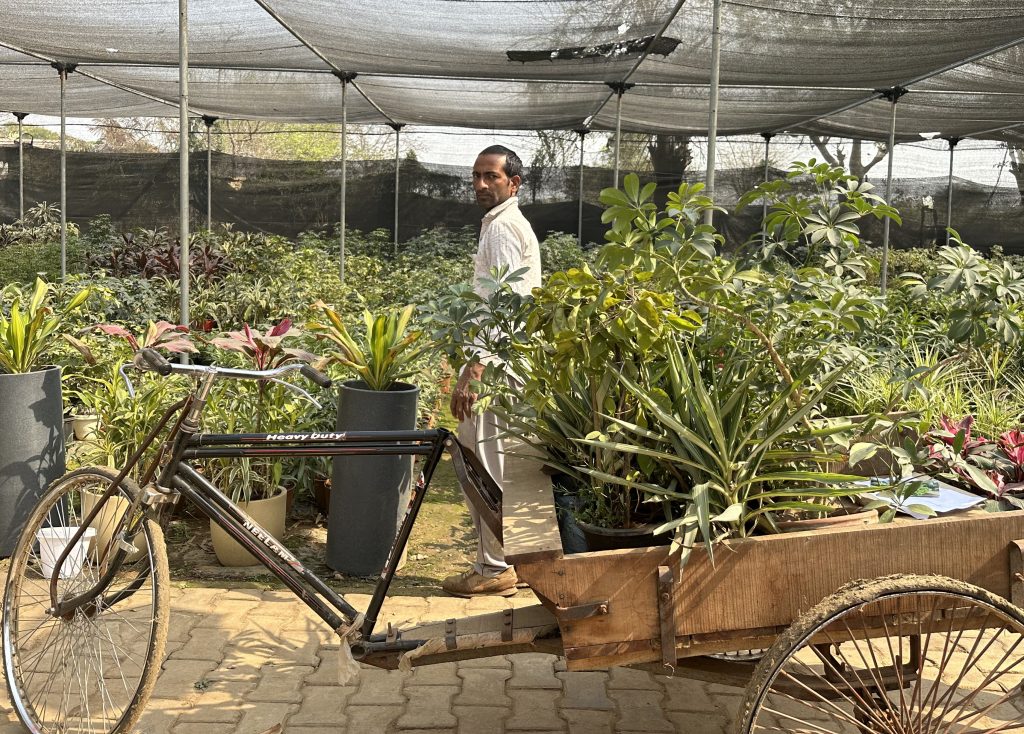
Imagining Alternatives for Green Urbanism
Perception of nurseries and Maalis focuses solely on production and sale of plants but a revised perspective embracing a multi-dimensional approach through nuanced understanding is necessary for thriving in urban environments. Firstly, fostering a structured and organized industry is required followed by transforming nurseries from mere vendors to facilitators. This involves creating an ecosystem that empowers urban residents to collaborate with the domain beyond simple consumerism. Nurseries, instead of solely prioritizing sales, should encourage a proactive approach, readily providing basic yet crucial information to customers.
Furthermore, the labor involved in this line of work requires multifaceted training. This encompasses not only technical skills but also marketing and sales knowledge while emphasizing ethical practices and environmental awareness. Equipping workers with the right tools and knowledge is crucial to developing “smart gardeners” who can contribute to a sustainable future for urban horticulture. While well-intentioned, issues persist regarding the effectiveness and long-term impact of current efforts. Providing a recent example of a school’s visit to his nursery and their demeanor regarding the objectives of such field visits, the President of INA & Owner of Greenways Nursery, Mr. Y. P. Singh emphasized that moving beyond mere showmanship is essential. Replacing superficial, ‘picnic-style’ initiatives with genuine knowledge sharing and long-term follow-up support is crucial for the success of outreach programs. Bridging the gap between plan and practice is vital for the industry to reach its full potential and contribute to sustainable development.
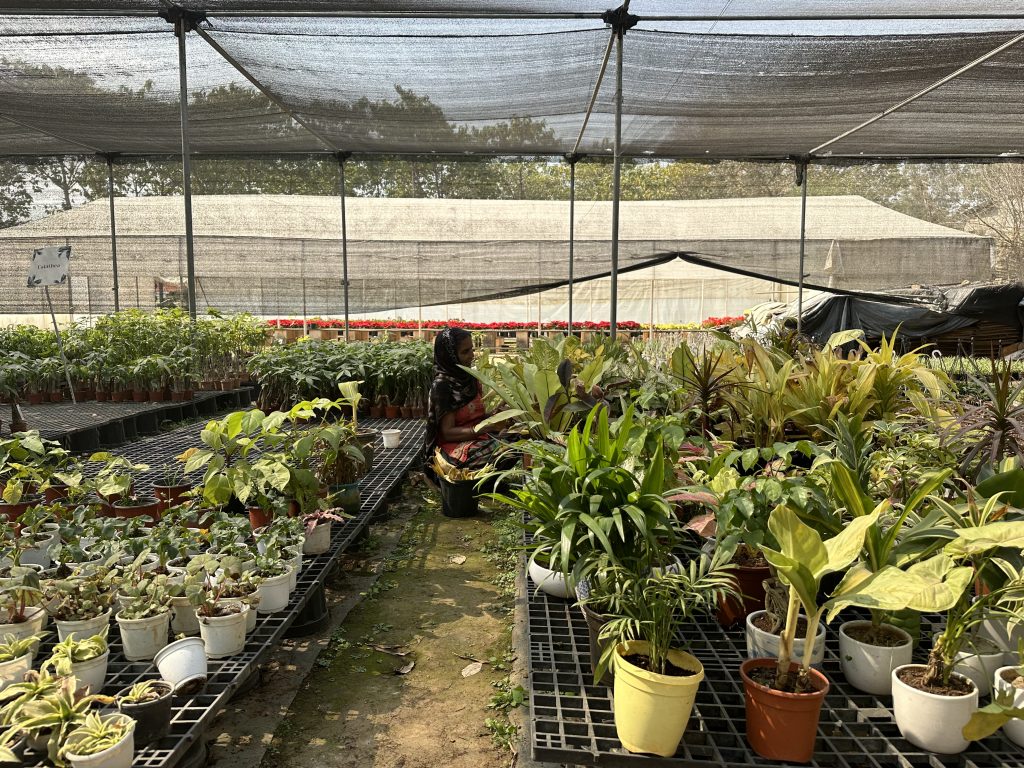
This public meeting has adequately put forward the position of the urban horticulture representatives. Unlike many heavily commercialized sectors, nurseries offer a blend of personal fulfilment and environmental impact. Participants in this sector see themselves as “environmental warriors,” actively combating climate change. However, they require a platform to amplify their message to a wider audience, particularly considering the looming climate crisis. The potential of the nurseries goes beyond immediate needs, as it can equip our children with the knowledge and skills necessary to prepare for a sustainable future. While discussions about these challenges have been ongoing, a more proactive approach is needed as highlighted by Mr. Ashok Yadav from Gurgaon along with the importance of encouraging support from officials and leaders for sectors like agriculture and horticulture. While achieving true synergy between these sectors and the government might be a long-term goal, it’s achievable through well-defined plans and collaboration. To overcome the current lack of unity, we need patience and a strategic approach to advocate for policy changes and all of the association’s members should be committed to sharing legal resources and research to empower the community and navigate legal hurdles.

A key challenge currently hindering the industry pointed out by Mr. Y. P. Singh recurrently focuses on short-term profits over sustainable practices. He mentions how reluctance to offer guidance to clients often leads to negligence, ultimately harming both the plants and the sector itself. Further, he added that a shift in mindset towards ethical practices, environmental awareness, and long-term customer satisfaction is crucial for sustainable development of this sector and related stakeholders. Therefore, by bridging the gap between rhetoric and action, the nurseries and involved experts can lead our cities into a greener and more sustainable future.
Report by Vibhuthi Bhardwaj (Research Assistant)

